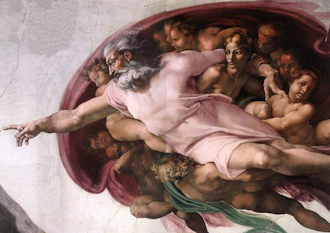The word Shekinah is not found in the original writings of the Old Testament. It does frequently appear, however, in what are called Targums.
A Targum, where the word Shekinah is recorded, is an Aramaic translation of the Old Testament created for the benefit of Jews who had little if any knowledge of Biblical Hebrew. According to the 1906 Jewish Encyclopedia, the first Targum came into existence as early as the time of Jerusalem's second temple which was rebuilt in 516 B.C.
Meaning
Shekinah is a Hebrew word that means "that which dwells" or "the dwelling." It is used to denote God or to the manifestation of His glory which symbolizes his presence.
Wherever Shekinah is mentioned in Rabbinic literature it is God's direct action or activity that is thought of. Independent personality is never imputed to it (1911 Encyclopedia Britannica).

Why Was It Used?
Shekinah was used by the Rabbis to mitigate the anthropomorphic (having human form or possessing human attributes) expressions applied to God in the Scriptures. They viewed such expressions as being improper.
"These rabbis spoke of the Shekinah in order to encourage Israelites to have a higher idea of God. They wanted people to think of him as a dazzling light or a shining presence, rather than as a human-like figure with physical features such as hands, arms, eyes, mouth and the like." (AMG Concise Bible Dictionary).
Examples
How is Shekinah used in a Targum? Below are three examples of King James text compared with the text of a Targum.
And I will dwell among the children of Israel, and will be their God (Exodus 29:45, KJV).
And I will cause my Shekinah to dwell in the midst of the children of Israel, and I will be their God (Exodus 29:45, Targum Onkelos).
And He said: "Thou canst not see My face . . ." (Exodus 33:20, KJV).
"You will not be able to see the face of my shekhinah (shekinah) . . ." (Exodus 33:20, Targum Onkelos).
Thine eyes shall see the king in his beauty . . . (Isaiah 33:17, KJV).
Thine eyes shall see the Shekinah of the king of the worlds in His beauty (Isaiah 33:17, Targum Jonathan).
Lack of God's Presence
The Ark of the Covenant, after Solomon finished building the first temple, was moved into the Holy of Holies. Once it rested in this location God's glorious presence (Shekinah), represented by a cloud, filled the room and the entire temple.
Then it came to pass when the priests had come out of the Holy of Holies, the cloud filled the house of the Lord. And the priests could not stand to minister because of the cloud, for the glory of the Lord had filled the house of the Lord (1Kings 8:10 - 11, HBFV).
After the temple was destroyed in 586 B.C. it was rebuilt in 516. According to Jewish tradition, this second temple was inferior to the first because it lacked both the Ark of the Covenant and the Shekinah (God's presence).